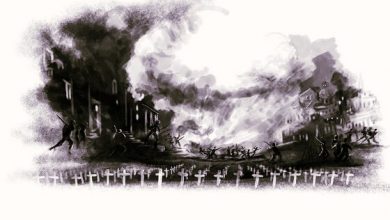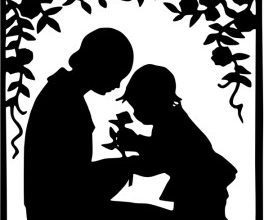Susan Sontag was an American author primarily known for her philosophical and literary essays that contributed to the canon of American literary criticism in the 20th century. One of the widely read works of her is the essay “Against Interpretation” which was published in a collection of essays bearing the title with the same name in 1966. Within the influential movement of New Criticism, Sontag creates a discourse on the form and content of a text where the latter has begun to occupy center stage amongst the critics who are preoccupied with a search for meaning in their inexhaustible quest for interpretation. She clearly rejects the need for interpretation in any kind of text to render value to the raw and sensory experience of reading and viewing it. She wishes to treasure the most primitive encounter one has when engaged with any art form without any scrutiny.
Against Interpretation | Summary
The essay begins with the notion of art as an “imitation of reality” according to Plato, the Greek philosopher’s mimetic theory which leads to the need for art to justify itself. On the contrary, Aristotle’s claim about the therapeutic effects of art disputes Plato’s notion of it being useless. These theoretical deposits over the years lead to the dissection of art into “form” and “content” as two separate entities. While contemporary criticism negates the representation factor in art, the presumption that there exists some content still dominates. The abyss of interpretation never allows one to be satiated with a particular meaning and this hampers the quality and essence of art. Sontag investigates the dire compulsion of interpretation through the conflict of interest arising between mythical texts and modern science using multiple examples across history. To protect them, interpretation comes as a handy tool that renders them intelligibility to allow them a space in the existing canon.
According to theorists like Karl Marx and Sigmund Freud, “to understand is to interpret.” Thus, interpretations are to be evaluated because it can either be a “liberating act” or a “stifling” and the author hints at the latter’s poisonous tendencies in the contemporary scenario. She points to the literary critics who believe their job to be a translation of a text into something else. A text is interpreted through various approaches such as socialism, psychoanalysis, religious allegory, etc. which ravishes it. She explicates her concern by drawing on the works of Thomas Mann, Franz Kafka, Samuel Beckett, Tennessee Williams, and the list goes on.
Interpretation has become the need of the hour for modern readers to understand something. Her discernment of cinematic form argues for the need of responding to what is there on the screen rather than finding meanings in various scenes.
looming sword of interpretation gives rise to abstract and parody art and modern forms of poetry where the word itself creates the magic. Further, she desires an art form that is immediate, rapid, and direct that can escape the web of interpretation, like films. As a part of the conclusion, Sontag hopes for the development of criticism that would “serve the work of art, not usurp its place” through thrusting on the form of art. She appreciates essays by various formalists which describe the “appearance of a work of art” in its sensuality. By advocating transparency in art, she refuses art’s assimilation into thought and culture and vouches for a more sensory and erotic connection with art.
Against Interpretation | Analysis
Sontag’s essay is a straightforward and clear exposition of the hampering limitations that interpretation as a practice puts on a work of art. She puts forth her arguments with enough supporting evidence that reflects her versatility of knowledge across different art forms ranging from fiction, drama, and poetry to critical commentaries and theories. Her methodology involves building up a situation with facts and instances prior to her claims and opinions about the modern approach towards interpretation and why it deems important. Following are some key arguments she brings forward as a contribution to the form v/s content debate:
Against Interpretation | Key Arguments
The West’s reflection on art has been influenced by the Greek theory of mimesis and representation which needs a defense, giving rise to the binaries of form and content making the former an accessory and the latter essential. A work of art is then approached with an intention of interpretation to answer the question ‘what does it mean’ when there should be no preconceived notions about it. She encourages absorbing it and relishing it the way it is instead of transforming it into a “translation.” Believing in the presence of some content in any art will cause “a hindrance, a nuisance, a subtle or not so subtle philistinism.”
Readers, audience and observers, everyone should learn to imbibe the art as a whole rather than selectively dissecting its elements which is what interpretation does as a consequence of a preconception that there exists a “discrepancy between the clear meaning of the text and the demands of the…readers.” This major concern in the texts belonging prior to the era of science and enlightenment is combated through interpretation where the interpreter “without actually erasing or rewriting the text…[alters] it… to be only making it intelligible, by disclosing its true meaning.” However, comparing the old style of interpretation with the contemporary trends, respect towards the art is declining. “The modern style of interpretation excavates, and as it excavates, destroys; it digs “behind” the text, to find a sub-text which is the true one.” Interpretation attempts to remove the foremost layer of the art in order to uncover what really lies behind it even if there is nothing. It has become a tendency or an impulse to make “art manageable” through intellect’s revenge on it.
An artist’s intention is sidelined with the advent of Roland Barthe’s critical notions in “The Death of the Author” which renders importance to a text as it is without the need for any knowledge pertaining to its author’s desires, wishes, or aims with it. Sontag agrees with this line of thought but she also believes that by creating meanings out of it as a selective approach, we may or may not fall into the author’s web of perspective as well as rule out all other possible meanings. Interpretation is more focused on American texts which are not experimental in form and thus bear the brunt of it. However, she proposes a unified surface of a work of art “whose momentum is so rapid, whose address is so direct that the work can be…just what it is” to “elude the interpreters.” Films happen to conform to these specifications as other areas of enquiry such as cinematic techniques, light, sound, and shot angles occupy the audience.
Sontag finally suggests the recovery of our sensory experience over the intellectual and mechanical workings of our brain. From an empirical viewpoint, “we must learn to see more, to hear more, to feel more” as the “function of criticism should be to show how it is what it is, even that it is what it is, rather than to show what it means.”
Against Interpretation | Supportive Statements
Sontag traces the situations and conditions which fuelled the demand for interpretations in the pages of history. She locates its first occurrence “in the literature of late classical antiquity when myth was overthrown by science and the era of enlightenment. To give back ancient texts their sanctity and also meet modern demands, interpretation as a tool was employed.” Through an example of Homer’s epics, she delineates how the stoics allegorized Zeus’ adultery as a “union between power and wisdom” to maintain the enforcement of perception that gods are moral –
“In the same vein, Philo of Alexandria interpreted the literal historical narratives of the Hebrew Bible as spiritual paradigms. The story of the exodus from Egypt, the wandering in the desert for forty years, and the entry into the promised land, said Philo, was really an allegory of the individual soul’s emancipation, tribulations, and final deliverance.”
Interpretation thus enabled to conserve of these texts which contributed to their popularity. But to “interpret is to impoverish, to deplete the world—in order to set up a shadow world of ‘meanings.’ It is to turn the world into this world” when in reality, there is only one world. The author intends to claim that interpretations often lead to the imposition of meanings where there is no meaning.
By reducing the work of art to its content and then interpreting that, one tames the work of art. She articulates this with “the notes that Elia Kazan published on his production of A Streetcar Named Desire [where]… in order to direct the play, Kazan had to discover that Stanley Kowalski represented the sensual and vengeful barbarism that was engulfing our culture, while Blanche Du Bois was Western civilization, poetry, delicate apparel, dim lighting, refined feelings and all, though a little the worse for wear to be sure. Tennessee Williams’ forceful psychological melodrama now became intelligible: it was about something, about the decline of Western civilization.” Sontag claims that such an interpretation “indicates a dissatisfaction (conscious or unconscious) with the work, a wish to replace it by something else.”
To maintain her opinion on films as a work of art still protected from the cruel stabs of interpretation, she substantiates the quality of directness the medium has to reach its audience freely without “an itch to interpret.”
“The fact that films have not been overrun by interpreters is in part due simply to the newness of cinema as an art. It also owes to the happy accident that films for such a long time were just movies; in other words, they were understood to be part of the mass, as opposed to high, culture, and were left alone by most people with minds. Then, too, there is always something other than content in the cinema to grab hold of, for those who want to analyze. For the cinema, unlike the novel, possesses a vocabulary of forms—the explicit, complex, and discussable technology of camera movements, cutting, and composition of the frame that goes into the making of a film.”
Against Interpretation | Concluding Remarks
Sontag deploys a methodology of employing multiple examples to render ample support to her claims and provide a persuasive and well-informed tone to her arguments. She thrusts on the immediacy of experience in a work of art to perceive it the way it is without any outside influences. Her complete rejection of interpretation altogether limits her position among the critics of New Criticism who believed in the power of text as a self-sustaining entity that is filled with meanings if read closely.
Initially, it appears that Sontag is refusing to search for any meaning in art. But she is advocating not searching for any different meanings in art other than what it clearly says at the surface. The belief that the task of interpretation is a never-ending process is a true literary critic should be well versed with as each individual perceives art uniquely which opens the gate to multiple possibilities. A critic’s task is to describe the artwork in its form and appearance which is a formalist approach and Sontag seconds that.



